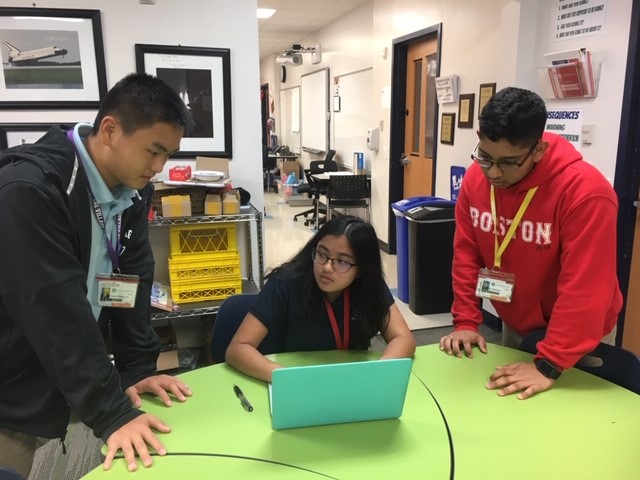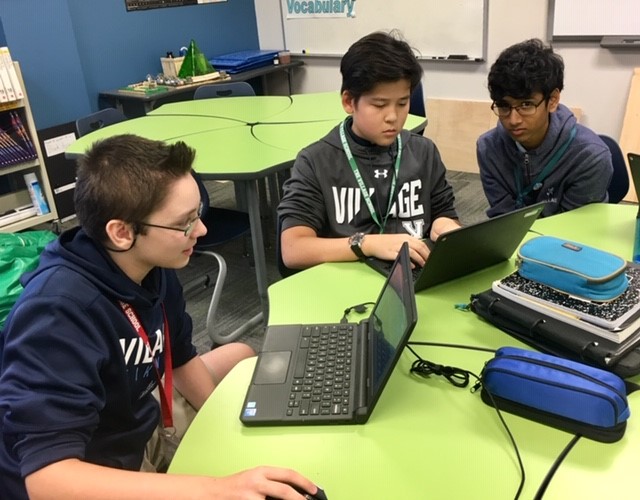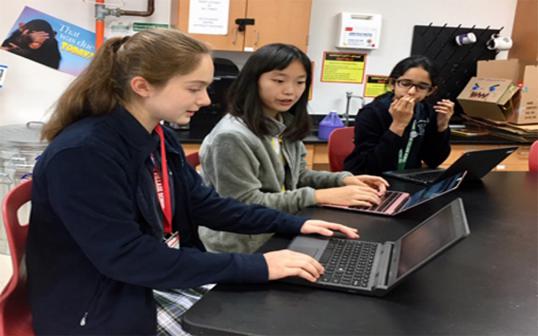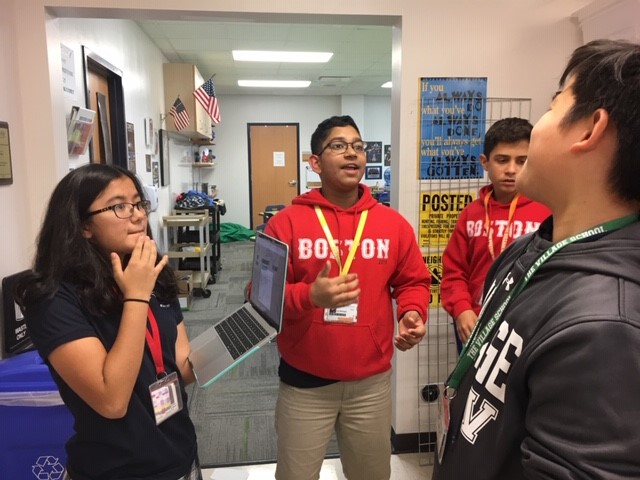Helping Students Build Skills and Confidence through ExploraVision
As teachers, our job is not only educate students but to help them form their identities. Bolstering a child’s self-esteem, helping them grow personally, and supporting their passions are the most rewarding parts of our careers. I can’t be the only one who enjoys seeing students transform from a shy, passive pupils to confident and engaged members of the classroom. I’ve seen this type of transformation in my career before – and it followed the integration of ExploraVision into our curriculum at The Village School in Houston, TX.
Initially, we decided to offer this STEM project-based learning competition to our 8th grade students as an enrichment competition. Groups of interested students met during lunch or after school, to solve problems they had identified. After seeing the skills that the participants developed—researching, brainstorming, collaborative thinking, creative problem-solving—the decision was made to integrate the competition into regular science classes for all students in grade 8.
After that “pilot” period, other middle school grades were included as we replaced a more traditional science fair with ExploraVision. Our school leadership saw it as a better opportunity to teach the scientific method and meet Next Generation Science Standards. Most importantly, this allowed better differentiation between basic and higher-ability creative students.

How to Brainstorm Exciting ExploraVision Ideas
ExploraVision ideas can originate from a variety of sources, so we begin the year by presenting current events in class and brainstorming things that students believe are keeping our world from being all that it can be. They examine innovative breakthroughs on news media and read scientific articles from magazines that cover topics such as science, astronomy and archaeology. Groups of 2-4 students work to develop and research an idea. We encourage participants to initiate discussions with professionals, parents, and anyone who can enrich their understanding of their chosen challenge. These conversations add depth to their research and teach them to how to respectfully interact with adults.

Pacing the Project
Class work, which is provided and distributed over several months, allows time for students to develop an in-depth understanding of the concepts they’ve researched. Meanwhile, the regular academic flow of study progresses parallel to the project. We set deadlines for ExploraVision sections such as “Present Technology,” “History,” and “Breakthroughs” in intervals that allow completion of the project by the February deadline. This helps students feel accomplished instead of overwhelmed.
The most challenging aspect of ExploraVision for us is overcoming the idea of writing a ten-page paper. Mentally, younger students are concerned by the sheer length. This can be overcome by shifting focus to each individual section, accompanied by its own deadline, rather than concentrating on the overall project.

How ExploraVision Benefits Students
Our students have won a number of Regional Awards at various grade levels. There have been numerous Honorable Mentions and although winning awards is not an end goal for us, it certainly reinforces school spirit among students and parents. I would encourage schools who are willing to make a change from traditional science fair topics and give ExploraVision a try, to measure the difference in student attitude, enthusiasm, and ability to work collaboratively after the competition is complete. These things lead directly to higher-level thinking and problem-solving abilities. After all is said and done, the proof is in the confidence level that students attain through this journey.

Download these powerful K-12 science lesson plans to get started!
About the Author
Ann Martin has taught science to young students for over 27 years at The Village Middle School. She enjoys working with her students on their ExploraVision projects and seeing them develop enthusiasm in the classroom. Learn more about Ann and other ExploraVision ambassadors.